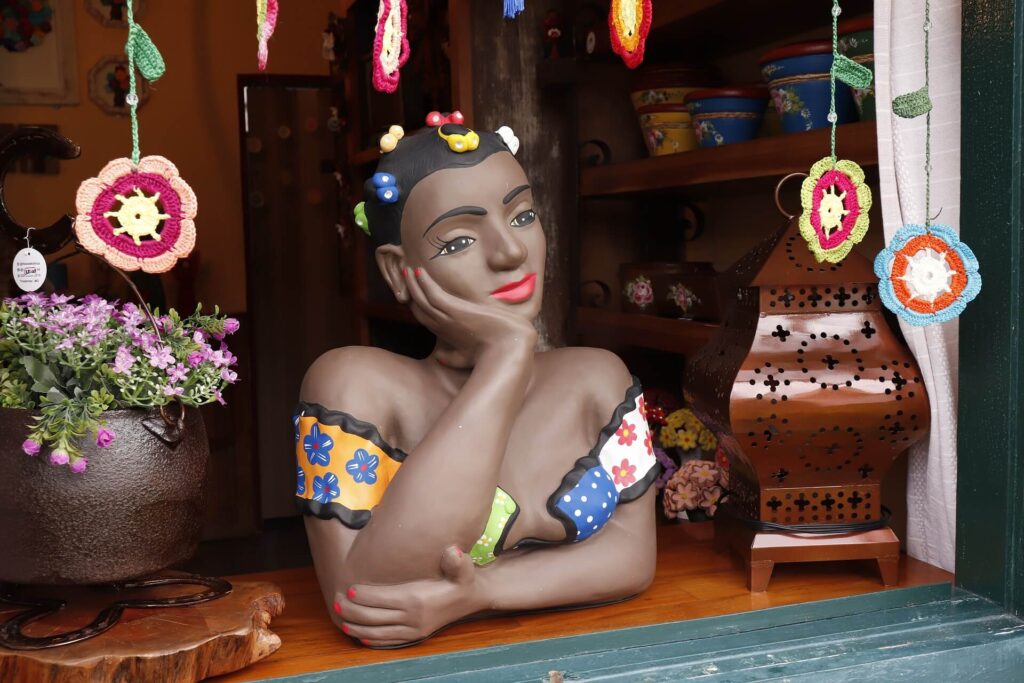
Traditional Brazilian crafts are just like Brazilian people; colourful, vibrant, and diverse.
In Brazil, you will find endless different versions of colourful pottery, comfy stylish hammocks, and glamorous dazzling gemstone crafts.
If you love to learn about different cultures and appreciate the soulful beauty of handmade work, this article is for you!
In this article, you will learn about the colours of Brazil, through their crafts.
You will be amazed by the diversity, the history, and the art skills of Brazilian craftspeople.
Here is a little summary of what you’ll see in this article, please feel free to jump and read any topic that interests you, or read all the content to fall in love with Brazilian crafts!
- Brazilian Craft History;
- Traditional Brazilian crafts;
- Local Brazilian Crafts you can buy online.
The Best 9 Traditional Brazilian Crafts
The traditional Brazilian crafts are different based on which region you visit, as each region has different resources and sub-cultures.
However the crafts listed here are the 9 most typical crafts skillful local artisans make in Brazil:
- Canga Brazil;
- Gemstone Crafts;
- Capim Dourado;
- Brazilian Ceramics;
- Brazilian Style Hammock ;
- Brazilian Wish Bracelets;
- Christ The Redeemer Statuette;
- Coloured Sand Bottles;
- Brazilian Music Instruments.
Affiliate Link Disclosure
This article contains some affiliate links which means that I may earn a small commission when you click on them, at no additional cost to you. I do hope you find the information in this article helpful!
Related Posts
- BEESWAX TEALIGHT CANDLES- AN EPIC GUIDE
- BEESWAX PILLAR CANDLES : EVERYTHING YOU NEED TO KNOW
- BENEFITS OF SUSTAINABLE TOURISM: ALL YOU NEED TO KNOW TO BE A SUSTAINABLE TRAVELER
Brazilian Craft History
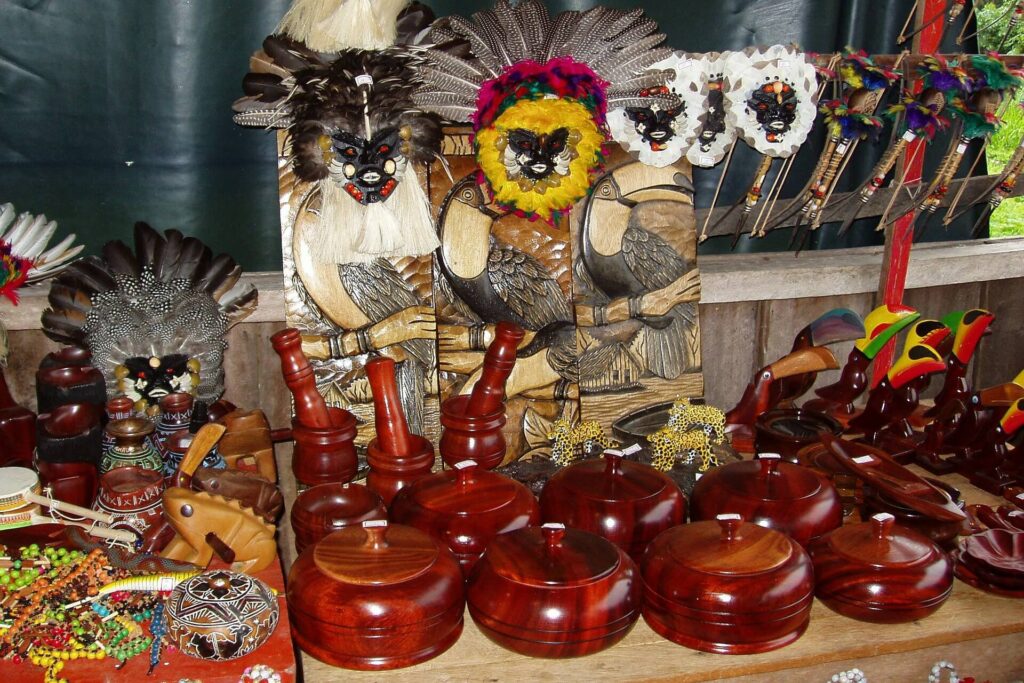
Pre-Columbian Art
Brazilian art and crafts start with Brazilian indigenous art, before they were colonized by the Portuguese empire.
For example, in Serra da Capivara you can find one of Brazil’s oldest indigenous art, cave art. This art dates back to 13,000 BC!
Indigenous Art Today
Thousands of years later, indigenous crafts are very diverse and change depending on the region they are created.
Today, they are approximately 300 ethnic indigenous groups in Brazil!
If we consider all of those groups, there are 5 typical types of indigenous art you can find:
- Indigenous Pottery;
- Indigenous Masks;
- Indigenous Bodypaint;
- Indigenous Basketwork;
- Indigenous Feather art.
Note: Indigenous crafts made with animal parts such as feather art is just for the local indigenous community use.
It is important to note that all of the traditional Brazilian crafts are not only indigenous art.
However, indigenous art is one of the biggest culture pillars in Brazil, as indigenous people were the first and original inhabitants of Brazil.
Multicultural Influence
Today, Brazilian Arts & Crafts have been influenced by Portuguese, Africans, Europeans, Indians, The Middle East, and Asia.
So, as you can see Brazil culture is very diverse!
But, we think this is awesome, as it has created a very unique and colourful culture that can’t be classified in one box, it is unique!
Crafts And Regions Of Brazil
Crafts are a representation of the customs, social values, and social behaviour a social group shares.
In short, is a symbolic representation of a shared identity.
However, even in the same country crafts change from region to region.
This is why we made a valuable summary of the 5 regions of Brazil and 2 of the most traditional Brazilian crafts created by local artisans.
North
North of Brazil’s crafts are highly influenced by indigenous tribes’ crafts.
The materials typically used are Capim Dourado, straw, açaí fibers, and animal feathers which are used as ornaments for bracelets, earrings, necklaces, or festive masks.
Some of the most traditional crafts in the north of Brazil are:
- Marajoara ceramics
This ceramic is Brazil’s oldest ceramic art. It is well known for its distinctive patterns and colourful designs.
They are majorly made on the island of Marajó in Pará, a state well known for the diversity of its fauna, flora, and delicious mangoes!
- Golden Grass items
Also known as Capim Dourado, this grass comes from the region of Jalapão (Tocantins state) and the village of São Félix, well known for their Capim Dourado crafts such as: hats, bags, table runners, and ornaments made by the skillful villages craftswomen.
Northeast
Northeast Brazil crafts are influenced by European cultures.
The locals’ craftspeople make distinctive pieces with ceramics, sand, and are especially known for their embroidery skills, crafting lovely pieces with bobbin lace or renaissance lace patterns.
Some of the most traditional crafts in the northeast of Brazil are:
- Lace and embroidery pieces
These crafts are a representative symbol of Alagoas state.
Specifically in the city of São Sebastião, and the region of Pan de Azúcar which is well known for its lacework, using delicate Brazilian embroidery patterns like the boa noite.
- Coloured sand bottles
The coloured sand bottles are art crafts that illustrate the natural landscapes of Brazil.
They are majorly made in Rio Grande Do Norte and Ceará, which is a state well-known for having breathtaking beautiful beaches, like the Jericoacoara, considered one of the most beautiful beaches in the whole world!
Midwest
Midwest of Brazil crafts are influenced by indigenous tribes and cultural exchanges with countries like Paraguay and Bolivia, as well as ancient cultural exchanges with Portuguese, African, and Indian people.
Some of the typical materials used for handicrafts are dried flowers, seeds, and leaves as well as ceramic and cotton.
Some of the most traditional crafts in the midwest of Brazil are:
- Tauá Cerâmica
Majorly made in Mato Grasso, a state with numerous rivers and a vivid fishing economy.
This ceramic is one of the most popular cultural crafts of different cities, such as Várzea Grande, Pocone, Rondonópolis, and Barra do Garcas.
They are painted with tauá, an abundant liquid clay with terracotta and reddish tones.
- Topiaria
This is a decorative ornament made with dried flowers and seeds arranged in bowls.
The topiaria is mainly made in Distrito Federal, the political center of Brazil.
Southeast
Southeast of Brazil’s crafts are influenced by contemporary and traditional culture.
The typical materials used here vary a lot but we can find handicrafts made with ceramic, wood, shells, and fish scales.
Some of the most traditional crafts in the southeast of Brazil are:
- Clay pots
The clay pots in the state of Espírito Santo are one of the oldest artisan crafts in this state.
It has a historic tradition of 400 years, this is a familiar tradition that gets passed from generation to generation, its origins are in African and Brazilian indigenous tribes.
- Woodwork
Mostly made in Minas Gerais, the tradition of working with wood was influenced by the Portuguese that arrived in the XVIII century.
It is important to note that Minas Gerais is the major producer of precious and semi-precious stones in the country.
South
South of Brazil’s crafts are influenced by indigenous tribes and European countries like Germany, Italy, and Portugal.
The typical materials used here are leather, wool, corn, and banana straw.
Some of the most traditional crafts in the south of Brazil are:
- Leather and wool garments
Traditional items such as sheaths for knives or boots are made in Rio Grande Do Sul, one of the states most influenced by European culture.
- Straw figures
These figures can be angels, flower arrangements, or little ornaments for different purposes.
They are made with corn and banana straw, this traditional handicraft is made in Santa Catarina and is a tradition influenced by German culture.
The Best 9 Traditional Brazilian Crafts To Understand The Brazilian Culture
Canga Brazil
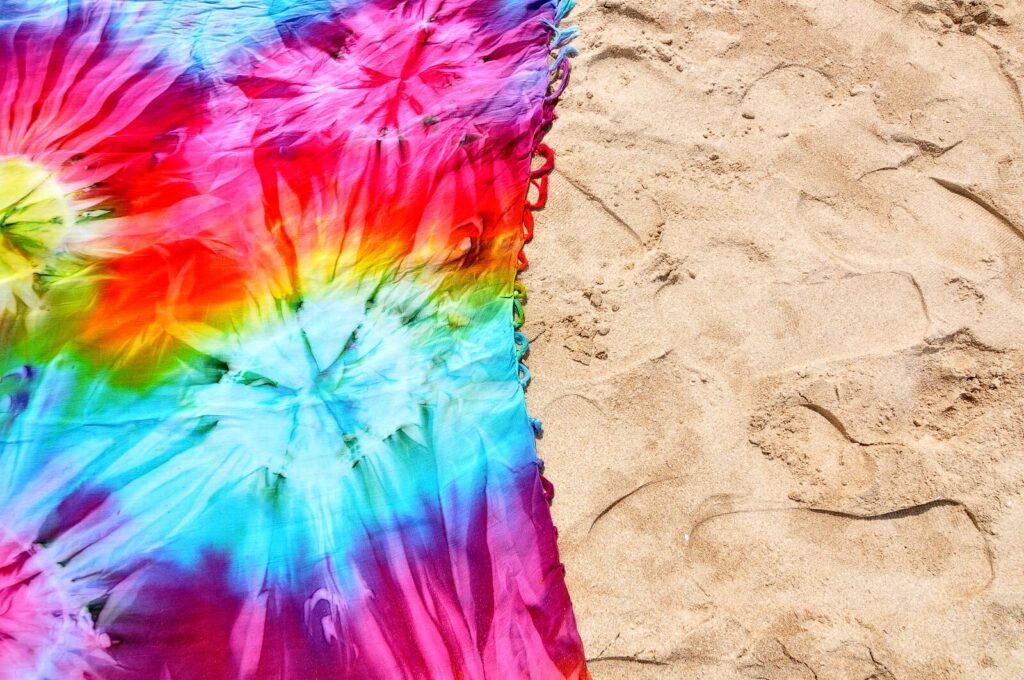
As Brazil is a highly multicultural country influenced by different countries such as African and Asian cultures, it is not surprising Brazilians have their own version of sarongs!
In simple words, a Brazilian canga is a beach towel and a sarong simultaneously.

When it’s beach time, Brazilians prefer to use their Brazilian sarong rather than conventional beach towels.
Why?
Because cangas have a lot of different benefits, such as:
- It dries faster than a towel;
- It is lighter than a towel;
- It can be used as a fashion garment, like a dress or skirt.
Sometimes, it is also used as a portable changing room, an improvised pillow, or even as a satchel!
Indeed, we think it’s versatility at its best.

Although the flag of Brazil is the most trendy design, you can find different traditional designs that illustrate traditional symbols; like the national bird, the Rufous-bellied thrush, typical beach landscapes, or colourful dazzling patterns (which Brazilians love!).

Tip: If you are unsure about how to create a dress with a Brazilian sarong, check this video out:
on how to wrap your Brazilian canga to make it look like a dress, with this video you’ll wear a Brazilian canga like a true Brazilian girl does!
Gemstone Crafts
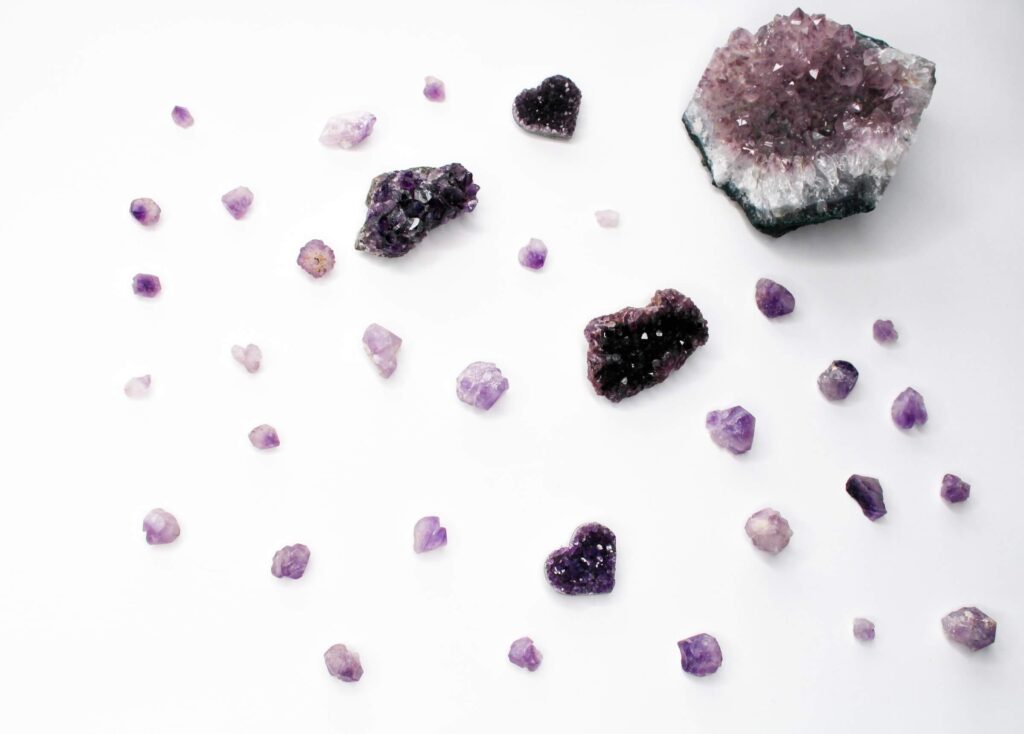
Gemstone crafts represent Brazil’s natural grandness in resources and wealth.

Brazil is one of the top world’s coloured gemstone producers and the only producer of Imperial Topaz and Paraiba Tourmaline; this is why gemstone crafts are a common local Brazilian craft found in a lot of Brazilian households.
You can find different precious stone crafts with national symbols or tropical birds like the toucan or macaws.
Nonetheless, one of the most sought after crafts in this category are gemstone trees.
Gemstone trees vary in:
- Sizes;
- Type of precious coloured stones;
- Prices.
However, you can find them in different places all around Brazil like stores, street fairs, or local markets.

Gemstone trees are handmade and require a creative mind and meticulous hands, the process involves:
- Selecting a gemstone base: Artisans must carefully select a natural gemstone for the tree base, the most common one is Amethyst, which they shape to create the illusion that the trunk of the tree is naturally coming out from the stone!
- Selecting the tree leaves: The tree leaves are made with natural tumbled gemstones which are glued into the wire branches.
- Creating the trunk: The trunk is usually created with strong wire that is skillfully shaped and painted to mimic a real tree
- Putting all together: This is the final step, the wire branches are attached to the trunk one by one and the gemstone tree is ready to be a glamorous decor for your home.

Note:
Although gemstone trees can have different materials for the tree base (such as wood), the Brazilian gemstone tree bases are usually made with quartz, such as Amethyst. Yes, gemstones all the way!

For those who are passionate about their homes, Brazil is also well-known for beautiful Agate coasters for drinks coasters or even as wedding favours. They are available in a variety of colours depending on your preference, interior scheme or the gifting occasion. What better way to dress up your home and make it uniquely fabulous!

Capim Dourado
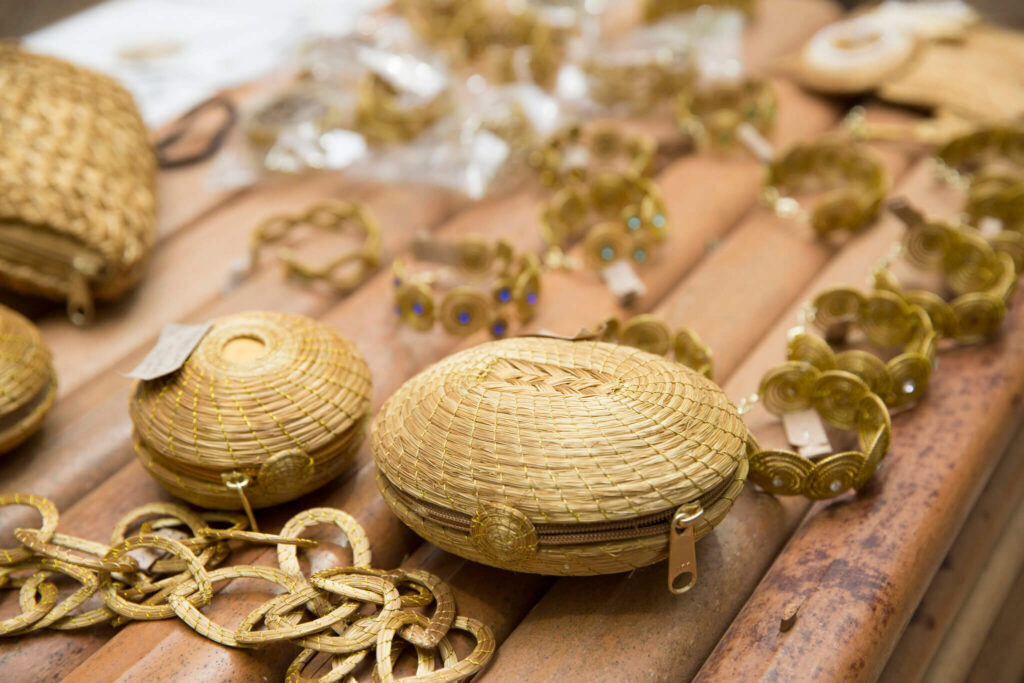
Brazilian golden grass or Capim Dourado, which is the name of this natural golden grass that can only be found in Brazil!
It is believed that the tradition of weaving and sewing Capim Dourado crafts dates back to the 1930s, originated from the Xerente indigenous ethnic tribe.
Today, this is a tradition passed from generation to generation and it’s a source of income for different local artisan communities that work with golden grass in Tocantins.
Local craftspeople make different accessories like golden grass jewelry, hats, or baskets.


These crafts can be found in different places, like:
- Small shops;
- Local artisan associations;
- International companies that work alongside local communities with fair trade agreements.
Note:
It is important to mention that The Tocantins State Government established an environmental protection law, where the golden grass is only harvested between September and November to protect the environment and the traditional Brazilian heritage.
This makes Brazilian golden grass jewelry, handbags, hats, or decorative pieces a truly unique and special kind of craft as it is very important for Brazilian culture.
Brazilian Ceramics
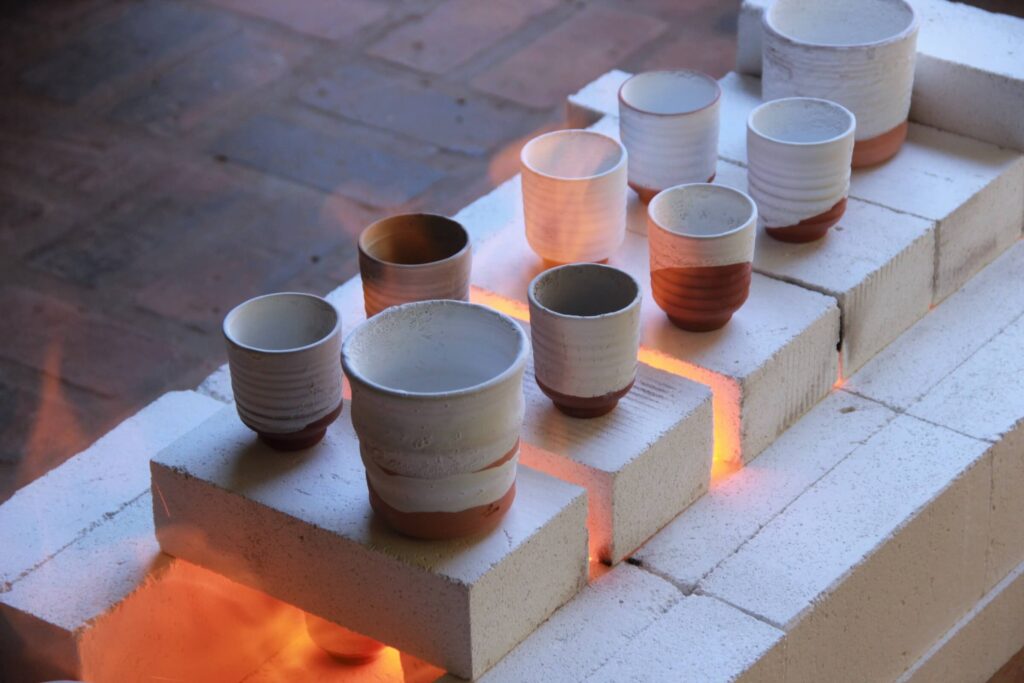
Traditional Brazilian ceramics and pottery crafts are some of the oldest handicrafts in Brazil.
The designs and colours used to create them differ from region to region.
For example, if you travel to Minas Gerais, a state in the Southeastern of Brazil, you will find symbols of colonial Brazil, a captivating place where you’ll feel you traveled to the past, amazed by the art and architecture of the XVIII century.
In this state, specifically in the region of Jequitinhonha, you will find Brazilian pottery that illustrates:
- A deep connection to everyday life;
- An appreciation of the routine;
- Women giving food to their children;
- Couples getting married;
- Love for nature, flowers, and farm animals.
In Jequitinhonha, it is also common to find pottery vases with a distinctive mix of orange and whitish tones that have delicate vivid flower patterns.
On the other hand, in the northern part of Brazil, you will find Pará.
In this region, the local craftspeople create the Marajoara ceramic, contrary to the Jequitinhonha designs Marajoara pottery has deeper colourful tones mixed with characteristic linear and geometric patterns.
Brazilian Style Hammock
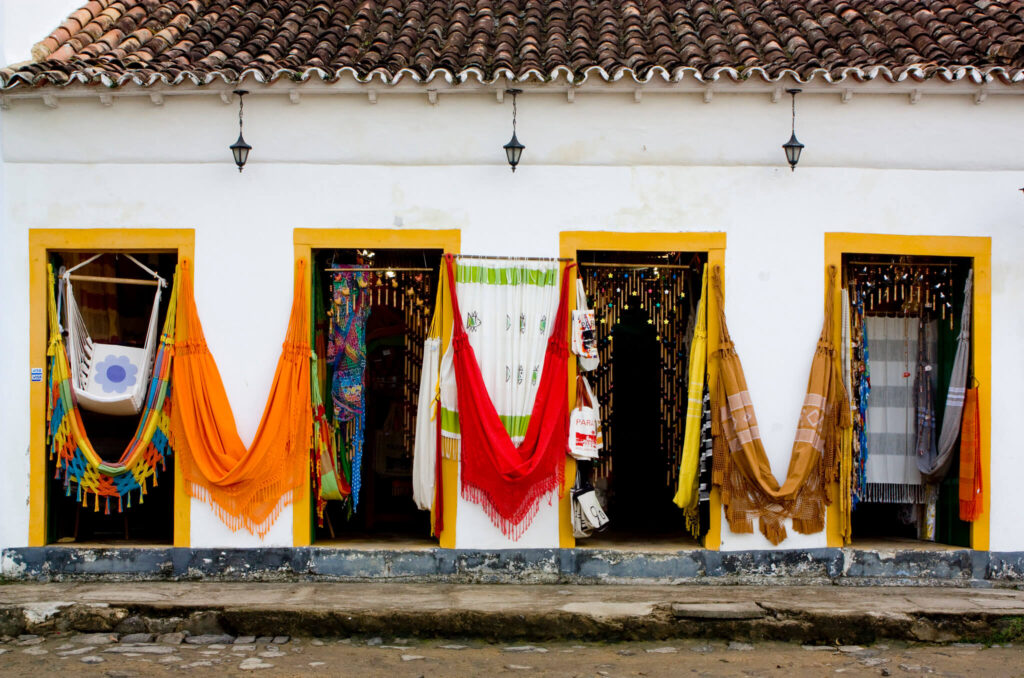
The Brazilian Hammock chairs and typical hammocks are a traditional craft heavily influenced by the Portuguese culture.


These hammocks can be used as a decoration for the home or balcony, but also to sleep on them.

You can find them in different places, including hammock local vendors that go around the beach selling their crafts.
Hammocks are very popular in rural or coastal towns.
For example in Rio Grande Do Norte, a state well-known for having craftspeople with outstanding abilities for lacework, you will find a Brazilian style hammock with double-sided cross stitch, an absolute delight to the eyes!

Also, in the northeast state, Paraíba, the local craftspeople of Boqueirao create popular hammocks with intensive colour tones and interesting macrame or crochet patterns.
Brazilian Wish Bracelets
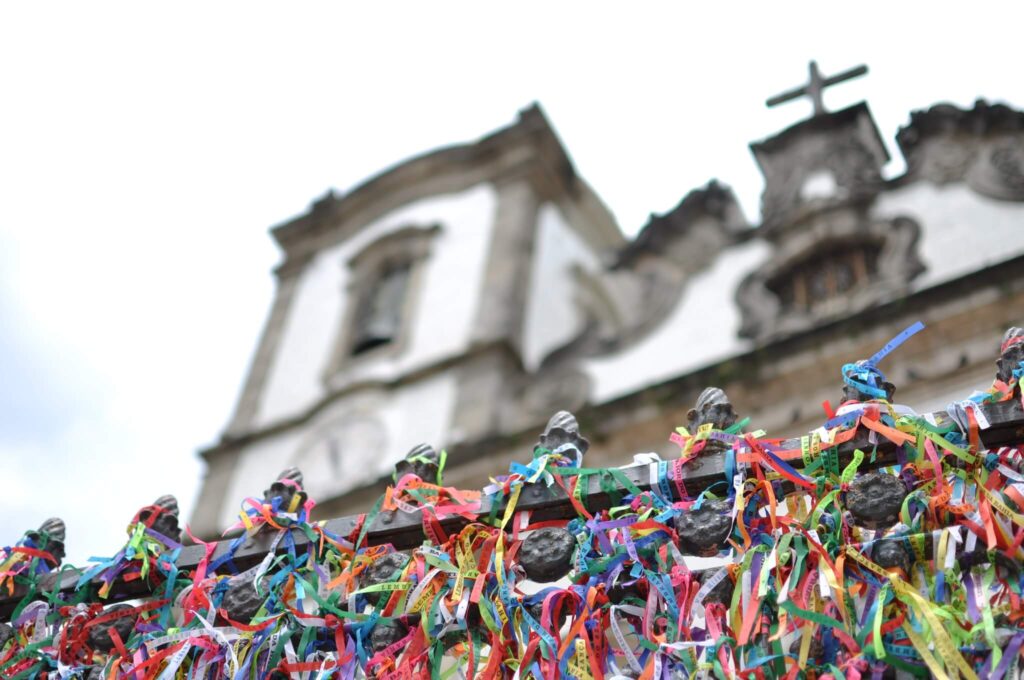
Do you want to make a wish?
Brazilian wish bracelets or Senhor do Bonfim ribbons are popular spiritual amulets from the northeastern state, Bahia.

However, as it’s a symbol of faith they are loved all over Brazil!
It is believed they were created between 1804 and 1809 by Manoel Antônio da Silva Serva, to obtain resources for the Senhor do Bonfim church (in the region of Salvador).
The tradition says you have to attach the bracelet to the bars of local churches, hat, bag, on your wrist, ankle, or wherever you like, and make 3 knots, each knot is a wish; when the bracelet breaks it is said your wish will come true!
It is a religious amulet and each person makes the wish to the god or goddess of their choice, each colour represents different entities and desires:
- Blue: For love;
- Rose: For friendship;
- Yellow: For success;
- Green: For health;
- Orange: For happiness;
- Violet: For spirituality;
- Red: For passion;
- White: For peace.

Note:
It is worth mentioning that Bahia saints are from African roots. However, they also have a close symbolism to catholic saints, which is another evidence of the multiculturalism different regions of Brazil have.
Christ The Redeemer Statue

Christ the Redeemer statue is a 38 meters high statue of Jesus Christ in Rio de Janeiro.
This statue was constructed between 1922 and 1931 and sits atop Corcovado Mountain, at 2,300 feet, in the Tijuca National Forest Park.
This massive statue it’s the fourth largest statue of Jesus Christ in the world, and one of the New 7 Wonders of the World!

So, it is not surprising Christ the Redeemer statuette is the most iconic Brazil souvenir and a popular local craft in Rio de Janeiro. There are even Christ the Redeemer posters in a vintage style that make a great backdrop and feature for any space.

Interesting fact:
Soapstone is an abundant metamorphic rock found in Minas Gerais, local artisans craft different objects with it such as jewel boxes and wine glasses.
Christ the Redeemer was made with concrete and soapstone for the outer layer.
The mosaic triangular-shaped coating of soapstone was made with the hands of many women that also wrote the name of their loved ones on each of the small pieces that covered the first concrete layer of the statue.
Coloured Sand Bottles
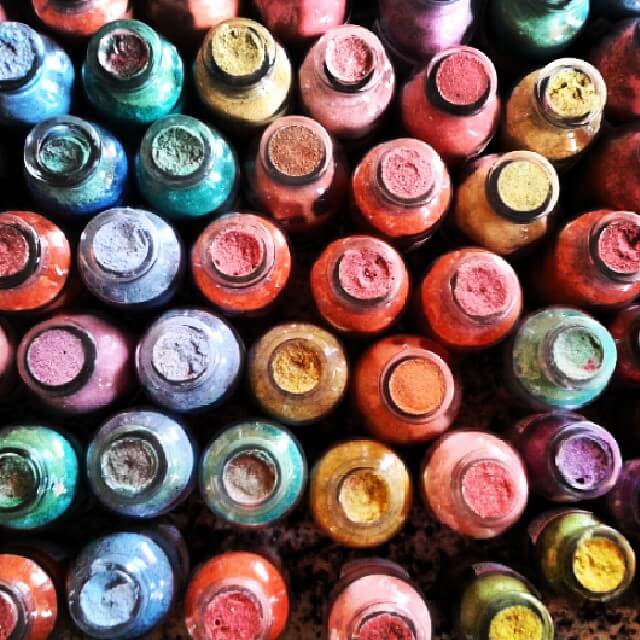
Sand and Art.
Brazil is rich in minerals, which has made the locals use the rich and diverse colours of their territory to create amazing folk art in glass bottles.
Coloured sand bottles are a traditional Brazilian art craft of Rio Grande Do Norte state and Fortaleza, the capital of Ceará.
Making coloured sand bottle crafts is a punctilious and demanding task.
Local artisans need to have patience to skillfully use long sticks for several hours to manually “paint” the sand and create traditional Brazilian landscapes.
The most typical colourful Brazilian landscapes you will found in the Brazilian sand bottles are:
- Local beaches;
- The Sunset;
- Local small towns.

If you would like to try your hand at making your own sand bottle art there are so many DIY craft kits for you to try out for yourself or with the kiddies. What better way to spend the day than creating your own unique sand art that you made by your own hands!

Brazilian Musical Instruments
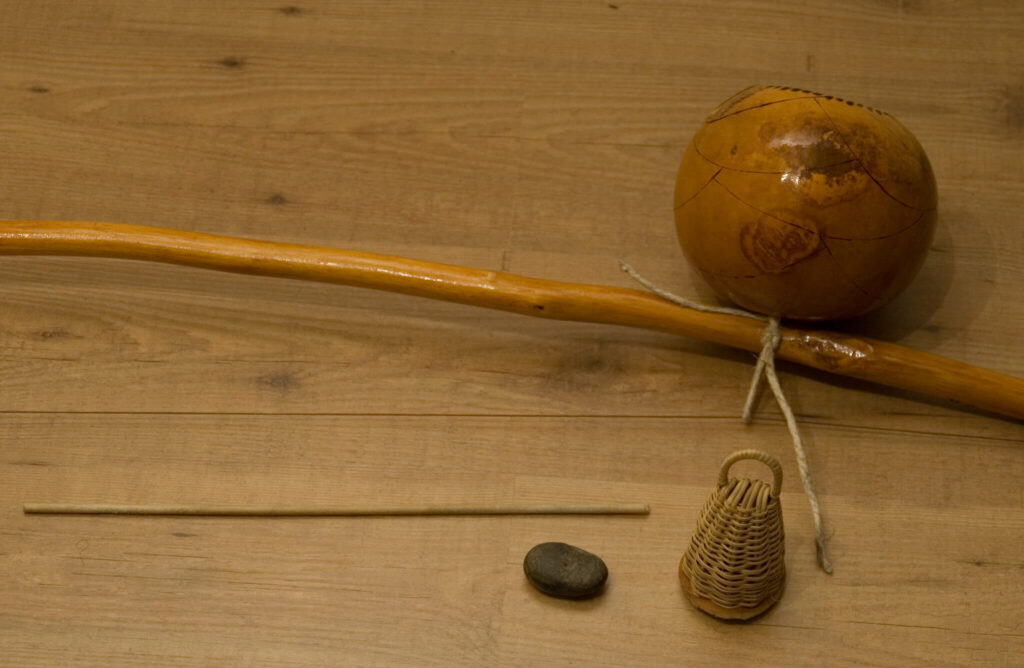
Brazilians have a deep connection with African music.
You can find the Afro-Brazilian musical instruments in the northeast region of Brazil, especially in Bahia.
Some of the most traditional Brazilian musical instruments are:
- The atabaques – tall wooden hand drum,
- The berimbaus – a single string musical bow with a bell shaped gourd to amplify sound,
- The agogos – a bell-shaped percussion instrument ,
- The kalimbas – a portable finger piano,
- The caxixi – rattan shaker filled with seeds or beads.
The berimbau, atabaques and the caxixi are traditional musical instruments for the capoeira dancing, a martial dance that combines acrobatics movements and African-Brazilian music.





On the other hand, these instruments are handcrafted and painted with materials such as: pumpkins, wood, iron, leather, and natural seeds.
The Best Brazilian Crafts You Can Buy Online
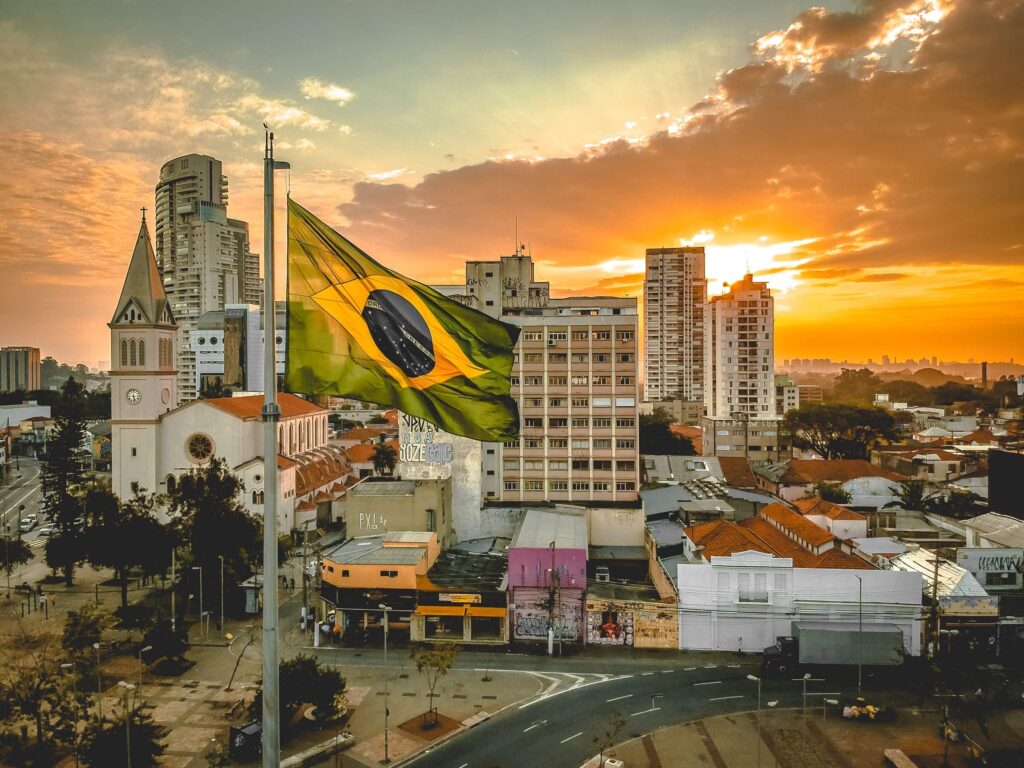
Here you will find a list of beautiful handmade Brazilian traditional crafts.
All of these crafts are made in Brazil, and many of the vendors are also local Brazilians, so either way, you are getting an original Brazilian craft!
1. Brazilian Canga
The versatile Brazilian towel.
The best option for travelers and practical persons who want to wear beautiful vibrant Brazilian designs while going to the beach or casual meetings.


Canga with Brasilian Hibiscus design

2. Gemstone Tree
Gemstone trees are the perfect traditional Brazilian crafts for a glamorous decoration, if you like stones the crystals from Brazil won’t disappoint you; these gemstone trees are an elegant and high-quality item for any home space that needs a little glam.

Amethyst Gemstone Tree with Amethyst Crystal Base

Rose Quartz Tree with Amethyst Crystal Base

Lapis Lazuli Tree with White Crystal Base
3. Golden Grass Jewelry
Golden Grass jewelry is durable and truly special.
Handcrafted by locals from generation to generation, a natural golden grass to enhance your natural beauty!


Gold Leather Golden Grass Bracelet

Note: All of the golden grass jewelry products listed are from local Brazilian artisans that have a fair trade agreement with the Colors of Brazil store seller.
4. Brazilian Style Hammock
These handmade Brazilian style hammocks are the perfect decorating item for your home.
Use them for relaxing, taking a nap, reading a book, or just admire how beautiful those patterns and colours look in your home.



Handwoven Hammock with Macrame Fringe
5. Christ The Redeemer Statuette
Beautiful handmade Christ the Redeemer statue made by Brazilian sculptors, an unique Rio de Janeiro symbol, and Brazilian craft that oozes faith.

Christ the Redeemer Statue In White Resin


Christ the Redeemer Statue Necklace
Conclusion
Traditional crafts go beyond time.
They help us keep our history and cultural identity.
By reading about traditional Brazilian crafts we have learned Brazilian’s respect the importance of family and cultural heritage.
This is something that aligns with The Sustainable Seeker’s core values, as Saffron & Serai our eco-store supports Malaysian traditional crafts.
This is why we sell beautiful Handwoven Mengkuang Mats that were handmade by Malaysian Villagers located on the East Coast of Malaysia.
Or Batik food wraps with motifs and patterns that represent Malaysian culture and heritage.
Finally, we hope you have enjoyed learning about traditional Brazilian crafts, Brazilian culture, and the importance of local crafts for cultural identity and history.
We would love to connect with you and build a supportive community!
If you have any comments please share your thoughts below 🙂
And, don’t forget to follow us at @saffronandserai.
